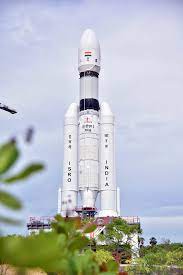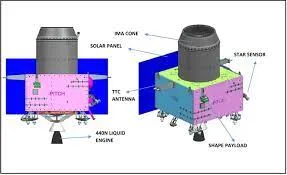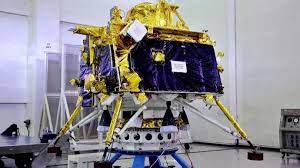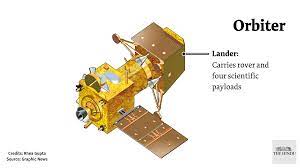ISRO CHANDRAYAAN 3 – |India First country to land on south pole of Moon -2023|
ISRO CHANDRAYAAN 3
ISRO CHANDRAYAAN 3 – It was a significant milestone in India’s space exploration when Chandrayaan-3, successfully launched on July 14, 2023, and the lunar lander namely VIKRAM and rover called as PRAGYAAN achieved a historic feat by safely touching down in the lunar south pole region on August 23, 2023, at 18:02 IST.
This remarkable achievement not only established India as the first country to achieve a successful spacecraft landing near the lunar south pole but also marked the fourth instance of a country achieving a soft landing on the Moon.

History of CHANDRAYAAN 3 Programme.
On the 22nd of July, 2019, the Indian Space Research Organization (ISRO) initiated the Chandrayaan-2 mission, deploying an orbiter, a lander, and a rover using the Launch Vehicle Mark-3 (LVM3) launch vehicle. The mission was carefully designed for lunar exploration.
With the planned objective of landing on the lunar surface in September 2019, the lander was intended to facilitate the deployment of the PRAGYAAN rover. Regrettably, during the landing attempt, the lander deviated from its intended trajectory, resulting in a crash and preventing the successful deployment of the rover.
Subsequent to the Chandrayaan-2 mission, plans were put forward for Chandrayaan-3 and additional lunar exploration endeavors.
Support for these missions is being extended by the European Space Tracking network (ESTRACK), a project overseen by the European Space Agency (ESA). This collaboration involves a novel cross-support agreement, potentially allowing ESA to provide tracking assistance for upcoming Indian Space Research Organisation (ISRO) missions, including significant projects like India’s inaugural human spaceflight program, Gaganyaan, as well as the Aditya-L1 solar research mission.
Follow Our Digiknowledge.co.in Page for Latest update about Bikes, Cars, Sports, Government Policy and many more.
In return, ISRO’s tracking stations will extend similar support to forthcoming ESA missions. This cooperative effort stands to enhance the capabilities and successes of both space agencies in their respective ventures.
Design of CHANDRAYAAN 3
Chandrayaan-3 was comprised of three primary components:
Propulsion Module:

The propulsion module fulfilled the essential function of transporting the lander and rover configuration to a lunar orbit situated around 100 kilometers (62 miles) above the lunar surface. This module exhibited a box-shaped design, featuring a substantial solar panel affixed to one side. The upper part of the module hosted a cylindrical mounting structure, known as the Intermodular Adapter Cone, designed to securely house the lander.
Lander – Vikram
The Vikram lander held the crucial responsibility of facilitating a gentle landing on the lunar surface. With its box-like structure, this lander was equipped with four landing legs and four landing thrusters, each capable of generating 800 newtons of thrust. Its primary purpose was to transport the rover and a collection of scientific instruments designed for on-site analyses

In terms of structural enhancements, the impact legs of the Chandrayaan-3 lander were reinforced in comparison to those of Chandrayaan-2. Additionally, measures were taken to improve instrumentation redundancy, ensuring a more resilient system. To enhance precision during landing, the Chandrayaan-3 lander was designed to target a narrower 4 km by 4 km landing region. This precision was based on the images previously acquired by the Orbiter High-Resolution Camera (OHRC) aboard Chandrayaan-2’s orbiter.
The Indian Space Research Organization (ISRO) also implemented several modifications to increase the lander’s robustness and survivability during descent and landing. These improvements encompassed heightened structural rigidity, intensified polling frequency in instruments, augmented data frequency and transmission capabilities, and the incorporation of supplementary contingency systems.
These adjustments collectively aimed to enhance the lander’s ability to withstand and manage potential failures during the crucial phases of descent and landing.
The rover-Pragyan
The rover designated as Pragyan possesses six wheels and weighs approximately 26 kilograms (57 pounds). Its physical dimensions measure 917 millimeters (3.009 feet) in length, 750 millimeters (2.46 feet) in width, and 397 millimeters (1.302 feet) in height.

Pragyan has been meticulously crafted to execute a multitude of measurements, essential for advancing research in several lunar domains. These measurements encompass an investigation into the composition of the lunar surface, the potential presence of water ice within the lunar soil, an exploration of the historical lunar impact events, and an analysis of the Moon’s atmospheric evolution.
The rover’s capability to acquire and transmit data aids in augmenting our understanding of these critical lunar aspects.
Details about launching of CHANDRAYAAN 3
Launch
Chandrayaan-3 commenced its journey with a launch carried out by the LVM3-M4 rocket. The launch event took place on July 14, 2023, precisely at 2:35 pm IST. The site for this significant event was the Second Launch Pad at the Satish Dhawan Space Centre, located in Sriharikota, Andhra Pradesh, India.
As part of the launch sequence, the spacecraft was positioned into an Earth parking orbit, characterized by a perigee of 170 kilometers (106 miles) and an apogee of 36,500 kilometers (22,680 miles). This launch marked the initiation of Chandrayaan-3’s ambitious lunar mission.
Orbit
Following a sequence of strategic maneuvers, Chandrayaan-3 was directed into a trans-lunar injection orbit, positioning it on a trajectory towards the Moon. Subsequently, on August 5, an important lunar-orbit insertion (LOI) operation was conducted by ISRO.

This operation, executed successfully, culminated in the Chandrayaan-3 spacecraft being effectively placed into orbit around the Moon. The LOI procedure was carried out from the ISRO Telemetry, Tracking, and Command Network (ISTRAC) located in Bengaluru, India.
Continuing the mission’s progress, a pivotal moment occurred on August 17 when the Vikram lander was separated from the propulsion module. This marked the commencement of the final phase of the Chandrayaan-3 mission, propelling the lander closer to its targeted lunar landing site.
Landing Procedure
On 23 August 2023, as the lander approached the low point of its orbit, its four engines fired as a braking manoeuvre at 30 kilometres (19 mi) above the Moon’s surface. After 11.5 minutes, the lander was 7.2 km (4.5 miles) above the surface; it maintained its altitude for about 10 seconds, then stabilized itself using eight smaller thrusters and rotated from a horizontal to a vertical position while continuing its descent.
It then used two of its four engines to slow its descent to roughly 150 metres (490 ft); it hovered there for about 30 seconds before continuing downward and touching down at 12:32 (GMT), and makes historic landing on Moon’s south pole.
Name the 1st country to land it’s spacecraft on south pole of moon .
INDIA
When and what time CHANDRAYAAN 3 land on south pole of moon ?
23 of August 2023 at 12-32 ( GST)
What is the aim of CHANDRAYAAN 3 ?
In addition to its primary objective of landing a spacecraft on the Moon, Chandrayaan-3 will undertake a range of scientific experiments aimed at comprehending the lunar environment. These investigations encompass the moon’s historical evolution, its geological characteristics, and the possibility of resources. By conducting these experiments, Chandrayaan-3 aims to enhance our knowledge of the Moon and contribute to our understanding of its past and present conditions.
What will be ISRO’s next programme ?
The Indian space program has embarked on a multi-faceted journey aimed at exploring various frontiers. It encompasses endeavors to explore the Lunar South Pole, examine the Sun, and achieve human spaceflight through the Gaganyaan program.





Some genuinely wonderful work on behalf of the owner of this web site, utterly great subject matter.